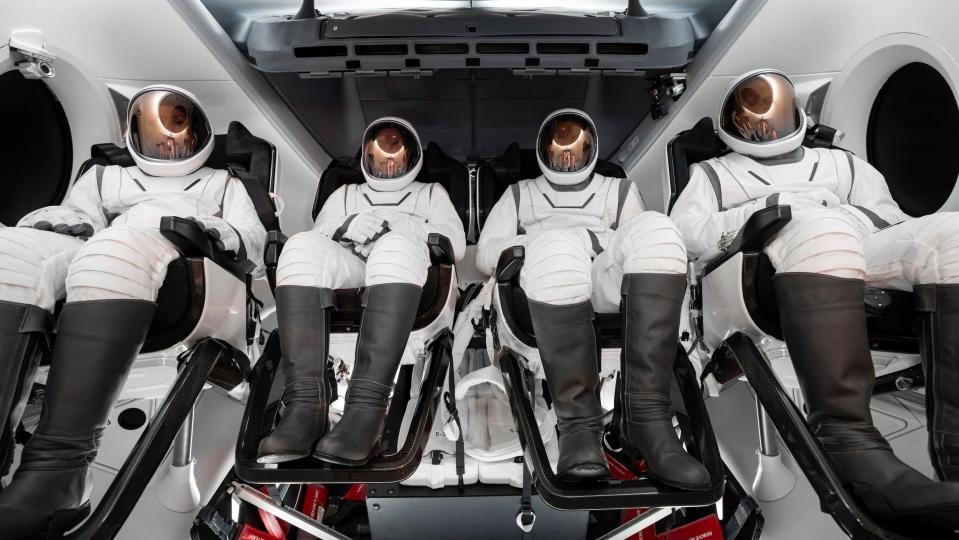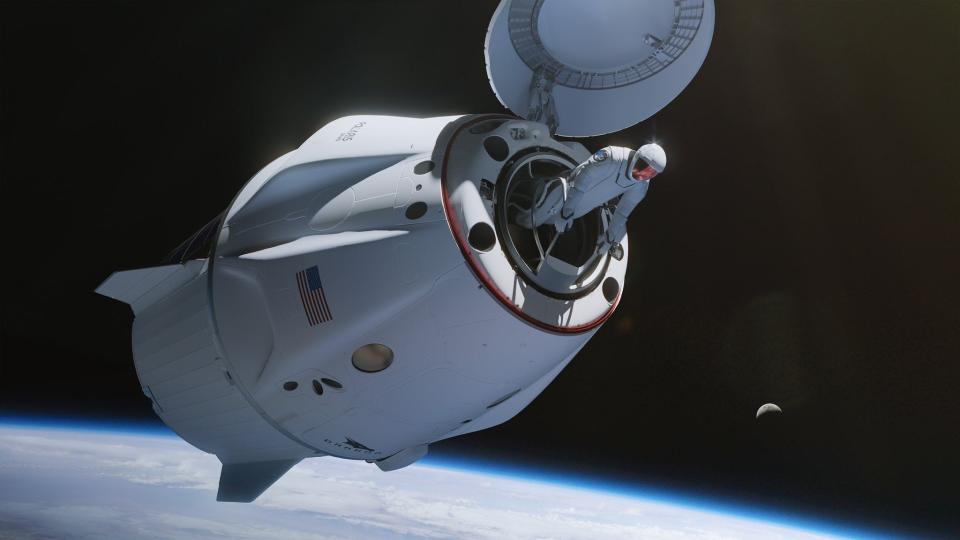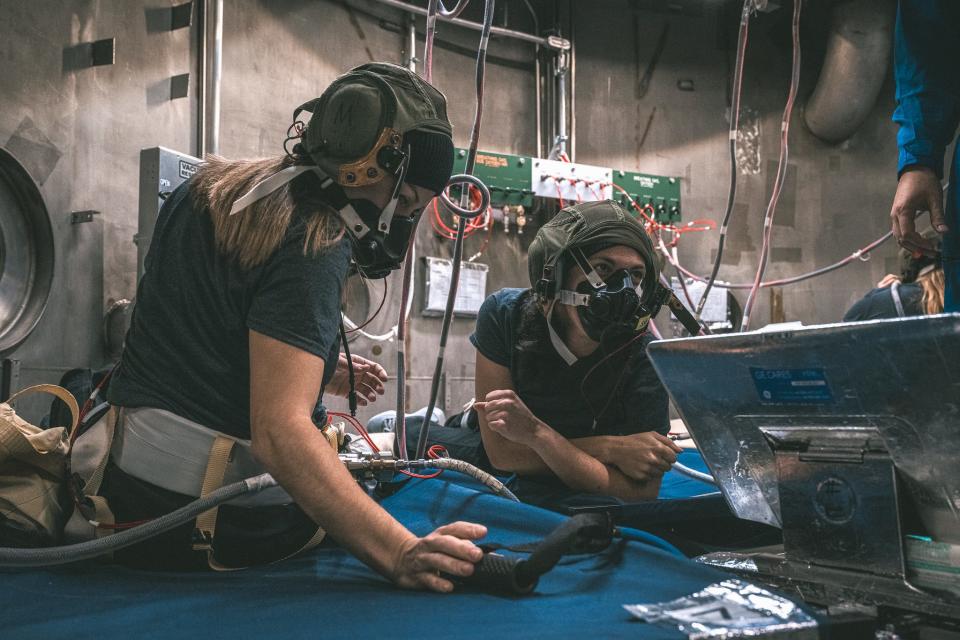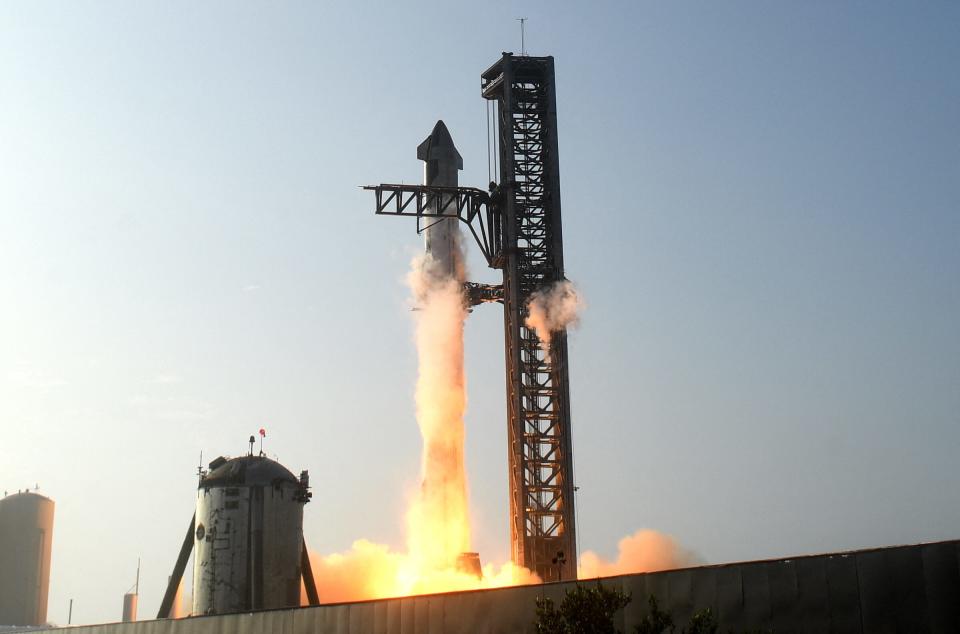SpaceX is launching its most daring mission yet on Monday morning.
Four civilians, none of whom are professional astronauts, plan to climb aboard SpaceX’s Crew Dragon spacecraft and fly into space on a Falcon 9 rocket.
Their mission, called Polaris Dawn, was conceived and funded by billionaire Jared Isaacman, who serves as the mission’s commander.
SpaceX is also seizing the opportunity to realize Elon Musk’s biggest ambition: sending people to Mars.
This isn’t the space tourism joyride you might imagine. The Polaris Dawn crew plans to conduct experiments and test technologies for Mars, including the first-ever attempt at a new spacewalk method.
“We’re really starting to push the boundaries with the private sector and learn new things that we couldn’t learn if we stayed in the no-risk environment here on Earth,” Bill Gerstenmaier, SpaceX’s vice president of engineering and flight reliability, said during an Aug. 19 briefing.
“It’s time to get out there, it’s time to explore, it’s time to do these big things and move forward,” Gerstenmaier added.
Polaris Dawn plans to fly through a radiation belt
In addition to Isaacman, the crew includes a former U.S. Air Force pilot, Scott Poteet, and two SpaceX engineers, Sarah Gillis and Anna Menon.

They are expected to stay in space for about five days, farther from Earth than anyone has been since the Apollo era more than 50 years ago.
On their 1,400-kilometer (870-mile) journey from Earth’s surface, they pass through the Van Allen radiation belts, two rings of intense radiation surrounding the Earth.


They want to study how that environment affects their bodies, as future missions to Mars would expose passengers to massive amounts of space radiation for months at a time.
A unique spacewalk plan
On day three, if all goes according to plan, they will perform a spacewalk. About 700 kilometers (435 miles) above Earth, the crew plans to don a set of new spacesuits, open the Crew Dragon’s hatch, and send Isaacman and Gillis into space via umbilical cables, each keeping in contact with the spacecraft’s handles.
Because Dragon has no airlock, the pressure in the spacecraft cabin will drop, exposing the entire interior to the void.


Never before has a Dragon spaceship been so exposed to the vacuum of space.
“You’re taking a big risk at that point,” Isaacman said, adding that he believed SpaceX had done a good job of mitigating risks through testing and spacecraft upgrades.
He said the spacewalk was the main focus of the mission preparations, almost to the point that he worried he was “way too focused” on it. SpaceX also subjected every part of the mission to “paranoia reviews,” where they started rechecking everything, he said.
When astronauts take spacewalks from the space station, they do a “pre-breathe” process: they breathe pure oxygen for a few hours to remove nitrogen from their bloodstream. Otherwise, the decrease in air pressure from the spacewalk could cause the nitrogen to form bubbles in their blood and give them a dangerous condition called “bends.”
Polaris Dawn also plans to do a pre-breathe, but over 48 hours, while slowly depressurizing the cabin. They’ve already practiced this in a two-day simulation on the ground.


“I like the plan,” Abhi Tripathi, former Dragon mission director at SpaceX who now leads mission operations at UC Berkeley’s Space Sciences Laboratory, told BI in an email. “It’s a rational and incremental step, partially funded by a private individual.”
He added that Crew Dragon was designed “from the outset” to withstand unplanned depressurization and that he sees “no special risks.”
New SpaceX spacesuits
A major goal of the spacewalk is to test SpaceX’s first extravehicular spacesuits, which use new textiles and joint designs to enhance mobility. The suits also feature a “heads-up” display built into the mask that gives the wearer real-time information about the suit’s internal pressure, temperature and humidity.
“You completely throw away the safety of your vehicle,” Isaacman said of the spacewalk.
“Your suit becomes your spaceship,” he added.
Crew Dragon holds a strong space travel record, except for the toilet
Dragon spacecraft have flown eight astronaut crews to and from the space station for NASA, as well as four private missions.
The vehicle’s first private mission — which was also the world’s first fully touristic spaceflight — was also sponsored and led by Isaacman. That flight, called Inspiration4, carried its four passengers through Earth’s orbit for three days.
Everything went smoothly, except for a toilet malfunction aboard Dragon. A tube carrying urine broke loose in a compartment under the floor of the spacecraft’s cabin.
The pee did not reach the cabin where the passengers lived. Other than repairing a toilet system fan that was setting off an alarm, the crew said they did not notice the contamination until they landed.
Isaacman and his new Polaris Dawn crew fly in that same spaceship.
Isaacman’s Polaris program plans to fly the first humans on Starship
This is just the first mission for SpaceX and Isaacman’s Polaris program. The project has not yet released details for the second mission.
The program’s third mission, however, will be the first crewed flight of SpaceX’s massive Starship, the workhorse rocket Musk hopes to one day use to ferry a million people to Mars.


Starship, which is taller than the Statue of Liberty, flew into space in June and returned in one piece. Many more test flights are planned before SpaceX plans to take a Polaris crew aboard.
Read the original article on Business Insider